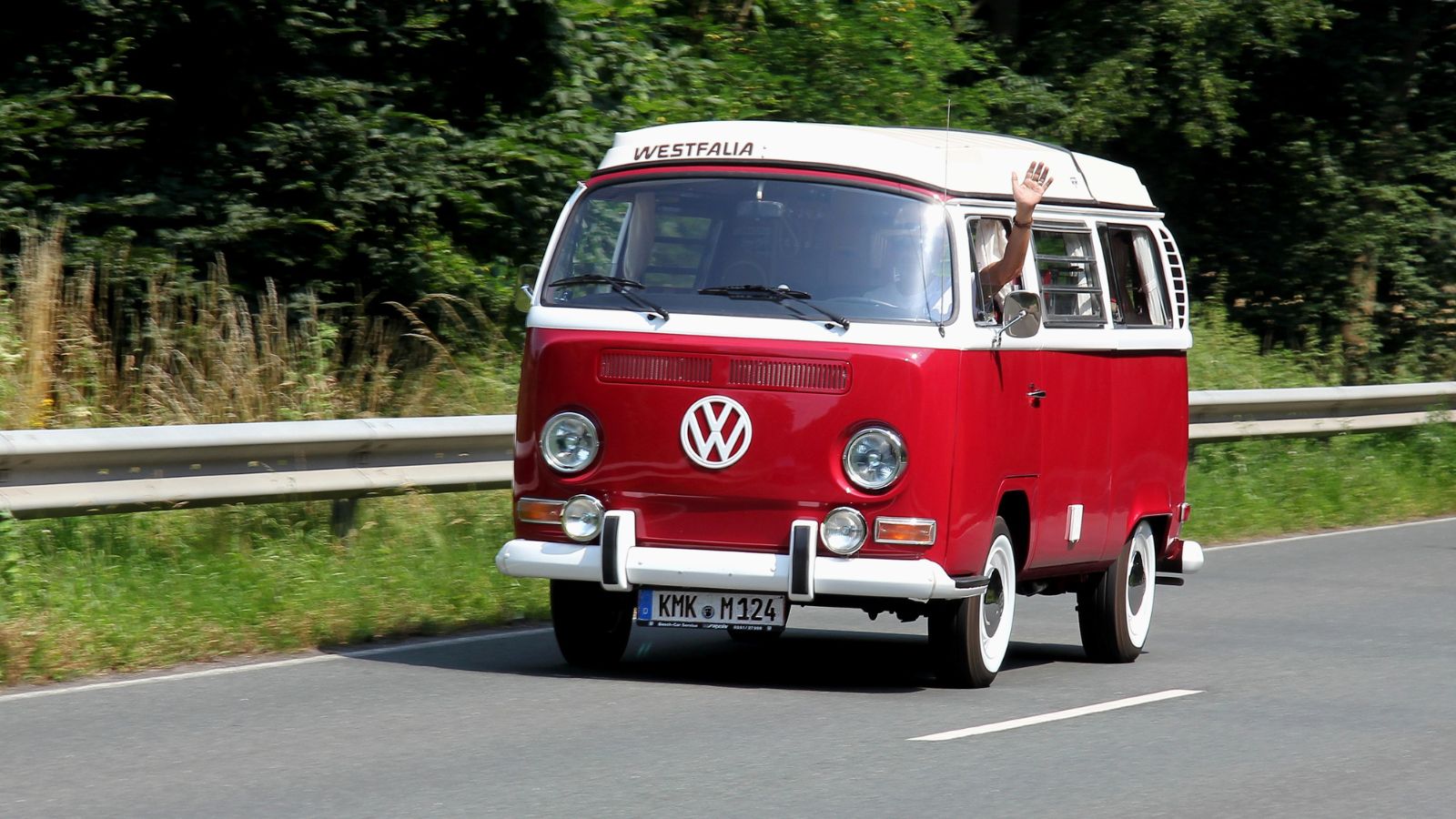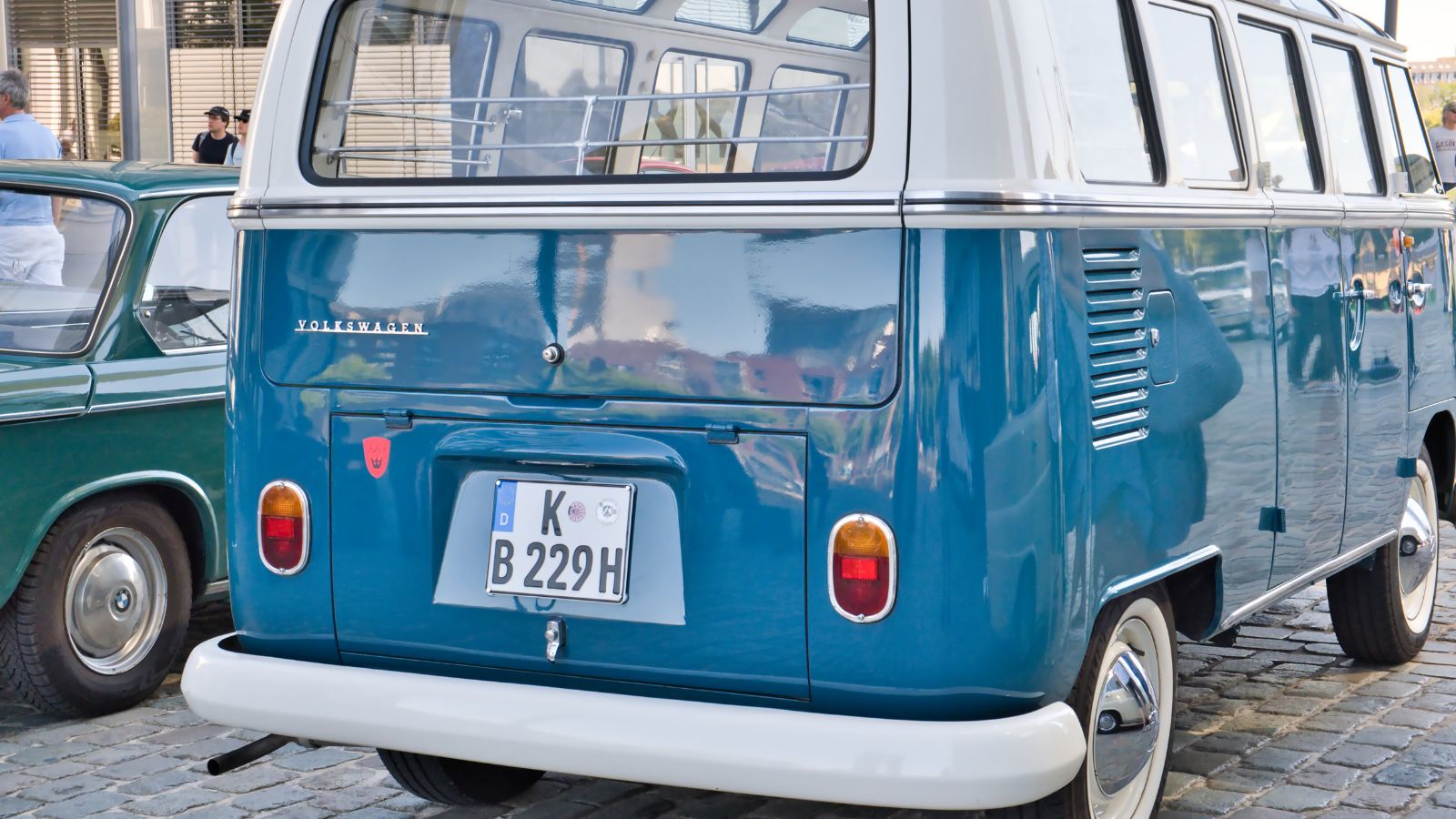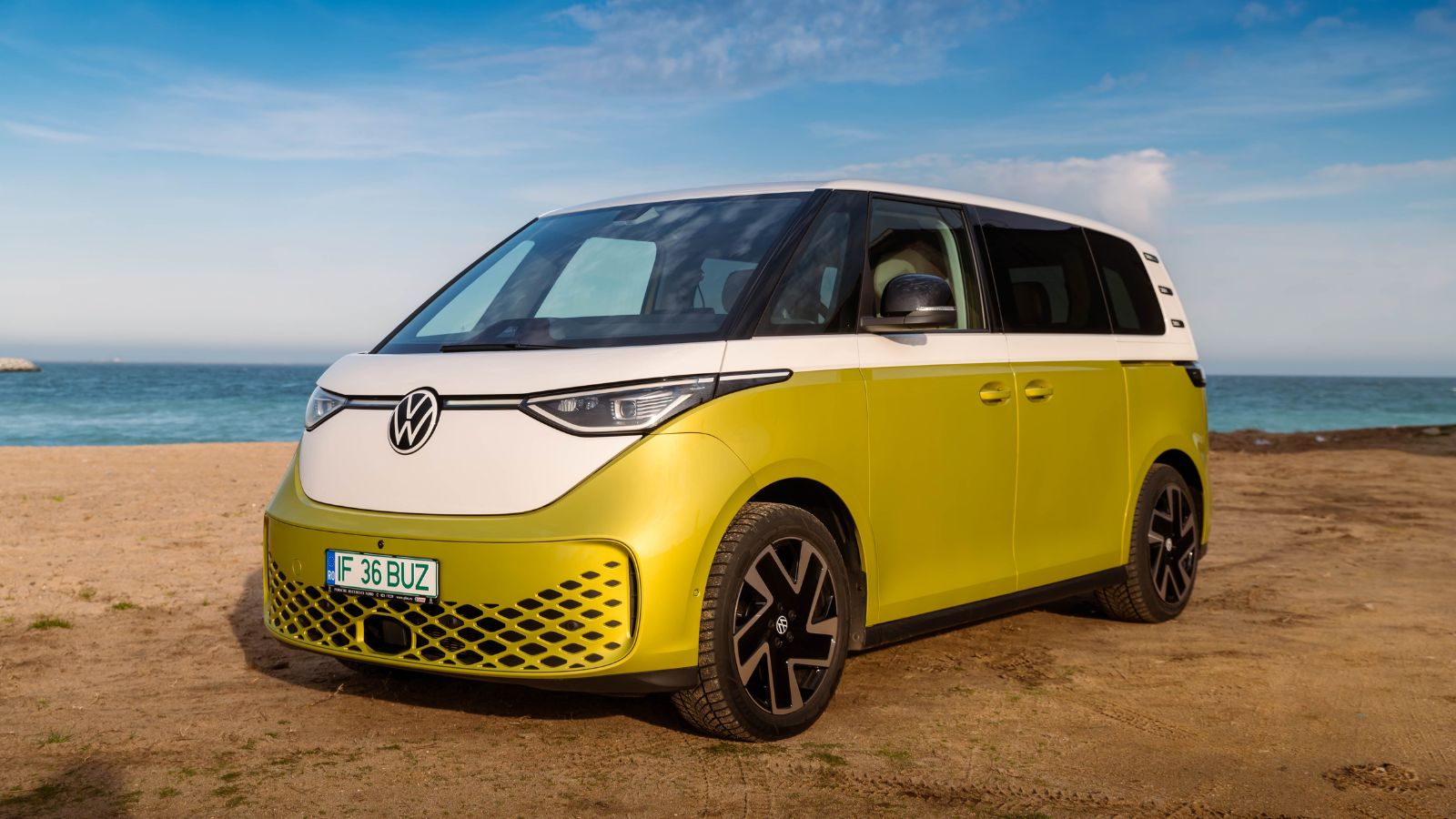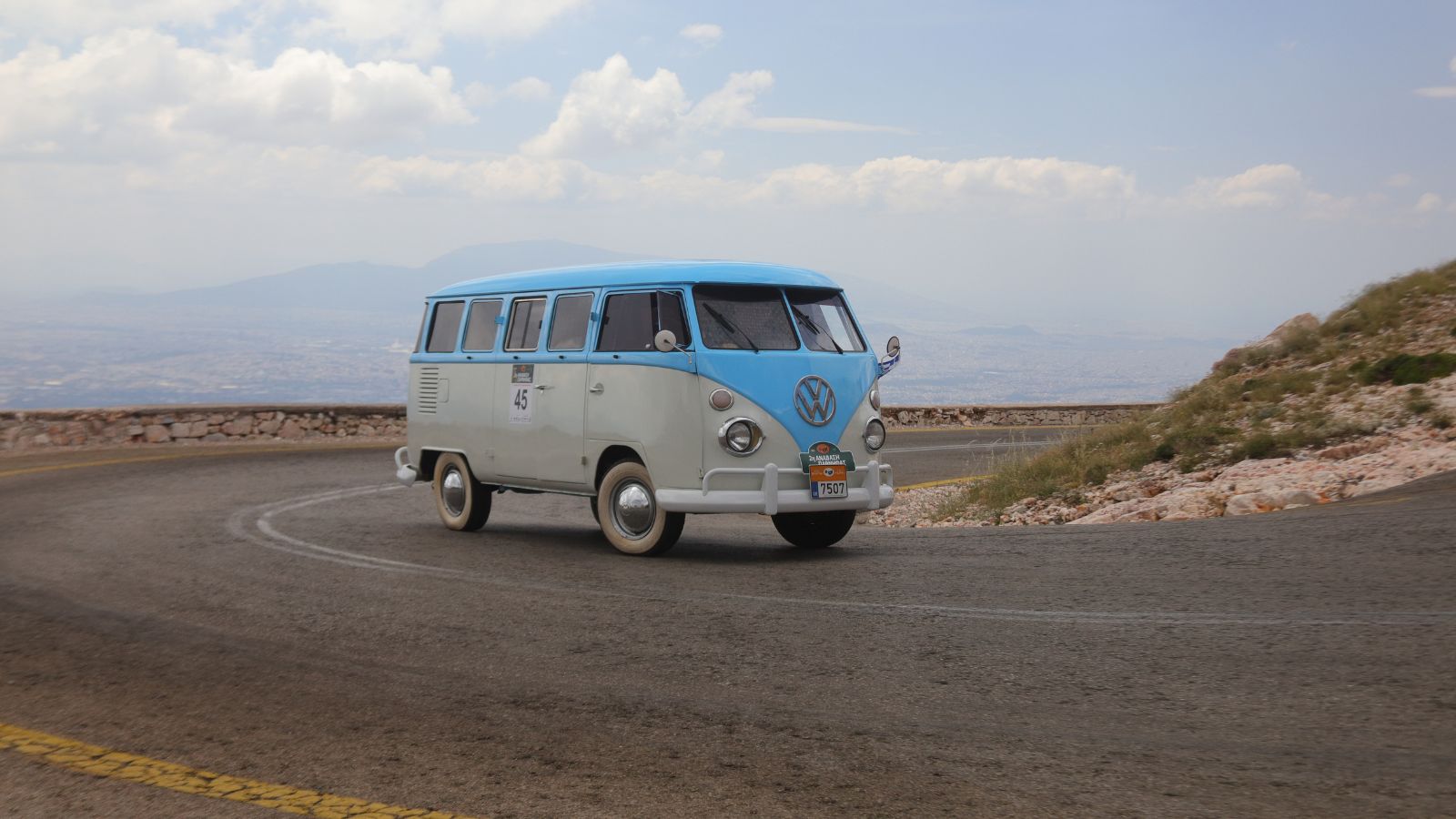Few vehicles have ever captured the world’s imagination like the Volkswagen Microbus. Known by many names such as the Type 2, Transporter, Kombi, or simply the “Bus,” it became far more than a van. It became a rolling symbol of freedom, creativity, and rebellion. From the beaches of California to the mountain roads of Europe, the VW Microbus earned an enduring cult status that no modern minivan could ever replicate. But what exactly made it so beloved, and why does that fascination still endure today?
A Vehicle Born From Simplicity

The VW Microbus was never designed to be glamorous or exclusive. Introduced in 1950, it was built on the same simple chassis as the Beetle, using the same air cooled flat four engine and rear wheel drive layout. Its shape was dictated entirely by function, with flat body panels, a tall cabin, and a wide windshield that gave excellent visibility. Yet that functional design would become iconic.
It was a vehicle created for utility but embraced for personality. It was simple enough that anyone could repair it with basic tools, and its modular design made it endlessly adaptable. It could haul cargo one day and be turned into a camper the next. The flat floor and boxy body made it easy to modify, and thousands of small workshops across the world began creating custom versions. The Microbus was not just a mode of transport; it was a blank canvas that reflected its owner’s creativity and lifestyle.
The Symbol of the Counterculture Movement

In the 1960s and 1970s, the Microbus took on a new identity as it became the vehicle of choice for a generation that rejected conformity. Affordable, easy to maintain, and capable of carrying friends, instruments, and surfboards, it became a moving home for those chasing freedom and adventure.
The Microbus quickly became tied to the hippie movement, appearing at Woodstock, following bands like the Grateful Dead, and filling the highways with color and optimism. It represented independence from the corporate world and stood as a quiet rebellion against the excesses of the time. The bright paint jobs, peace symbols, and flower designs became a language of their own. The VW Bus was not just transportation; it was a declaration of values.
Even outside of the United States, the same story unfolded. In Europe, South America, and Australia, it became the people’s van, beloved by young travelers, artists, and small business owners. The Microbus transcended class and geography, embodying a universal desire for simplicity and freedom.
Engineering That Encouraged Adventure

Mechanically, the Microbus was modest, but it had heart. The rear mounted air cooled engine was slow by modern standards, but it was durable, reliable, and surprisingly capable. The weight over the rear axle gave it good traction on dirt roads, and the engine’s simplicity made it easy to fix anywhere. With minimal electronics and a design that could handle rough terrain, it was the perfect travel companion for long road trips and offbeat adventures.
Owners loved its relaxed pace. The Microbus was not built to rush; it was built to wander. Drivers talked about the experience as meditative, a slow rolling connection between man and machine. It forced travelers to embrace the journey rather than chase the destination. This slower pace created stories, memories, and friendships that no modern vehicle could replicate.
The Camper Revolution

Volkswagen soon realized that many buyers were converting their buses into campers. To meet that demand, VW partnered with the Westfalia company to create factory built camper vans. These versions came equipped with fold down beds, pop up roofs, stoves, and even small tables. For many families, the Westfalia Camper was their introduction to road travel and outdoor living.
The camper versions helped define the idea of mobility as a lifestyle. They allowed people to travel without limits, blending freedom and comfort in a way that felt revolutionary. Families drove across continents in them. Young couples lived out of them. Retirees used them to explore the open road. This was the birth of what we now call “vanlife,” long before social media turned it into a trend.
The Westfalia models are among the most collectible today, especially early split window versions with their unique two tone paint and charming interiors. They were small, functional, and endlessly lovable, embodying everything that made the Microbus a symbol of adventure.
A Design That Invited Personality

The design of the VW Microbus was one of the most cheerful in automotive history. With its big round headlights and friendly face, it seemed to smile at the world. Its simplicity invited personality, and no two buses were ever the same. Owners hand painted murals, added curtains, swapped wheels, and treated their vans like members of the family.
It was approachable in a way that few vehicles could match. While sports cars demanded admiration, the Microbus inspired affection. People waved to each other on the road, formed clubs, and met up at events just to celebrate the shared experience of owning one. The connection between the owner and the vehicle was deeply personal, and it still is today.
Global Reach and Timeless Popularity

The Microbus became a worldwide phenomenon because it met universal needs. In developing nations, it was a workhorse that carried goods, passengers, and even served as ambulances. In wealthier countries, it became a recreational vehicle for road trips and weekend escapes. Its durability and simplicity made it beloved on every continent.
Production continued in various forms for decades, long after it left Europe. In Brazil, VW built versions of the Kombi into the 2010s, and in Mexico, they became part of daily life. Even today, restored Microbuses can be found roaming the streets of nearly every major city in the world.
Its global presence also helped spread its image across cultures. Whether you were a surfer in California, a family camper in Germany, or a craftsman in Brazil, the Microbus carried the same friendly spirit.
The Collector’s Dream

As time passed, nostalgia transformed the Microbus from an everyday van into a prized collectible. Early split window models, once seen as outdated, are now worth small fortunes. The 23 window Samba, originally designed for sightseeing tours, has become one of the most valuable Volkswagens ever made. Collectors pay six figures for well restored examples, and some rare versions have even surpassed classic Porsche prices.
The value is not just financial but emotional. Restoring a Microbus is like bringing back a piece of history. Owners often document every step, from welding panels to recreating original interiors, not just to show off the final product but to preserve a part of cultural heritage. The Microbus has become more than a vehicle; it is an artifact of optimism and community.
The Revival of a Legend

Volkswagen understands the emotional pull of the Microbus. In 2022, the company unveiled the ID. Buzz, a modern electric reinterpretation of the classic van. While its drivetrain and technology are fully modern, its styling unmistakably pays homage to the original. The large windows, two tone paint, and friendly proportions are all deliberate callbacks to the spirit of the 1950s Bus.
The ID. Buzz represents more than nostalgia. It shows that the ideas behind the Microbus freedom, family, and connection are still relevant in an age of digital noise and urban chaos. It is Volkswagen’s way of reminding people that driving can still be about joy and community, not just speed or status.
Why the Cult Will Never Fade

The VW Microbus has achieved something few vehicles ever will: timeless emotional relevance. It appeals to people who love travel, creativity, and authenticity. It represents freedom in a tangible, relatable way. You do not just drive a VW Bus you live with it, decorate it, and share experiences through it.
Its cult status endures because it is more than metal and wheels. It is a cultural bridge between generations. Parents who once camped in them now restore them with their children. Young travelers buy them to escape the routines of modern life. The Microbus stands for a simpler time, a slower pace, and the belief that the journey is more important than the destination.
Even in a future dominated by electric vehicles and automation, the spirit of the VW Microbus will live on. It reminds us that sometimes, happiness comes from slowing down, opening the windows, and seeing where the road takes you.
The VW Microbus was never meant to be a legend. It simply became one because it captured something universal: the joy of freedom, friendship, and the open road.
25 Facts About Car Loans That Most Drivers Don’t Realize

Car loans are one of the most common ways people fund car purchases. Like any other kind of loan, car loans can have certain features that can be regarded as an advantage or a disadvantage to the borrower. Understanding all essential facts about car loans and how they work to ensure that you get the best deal for your financial situation is essential. Here are 25 shocking facts about car loans that most drivers don’t realize:
25 Facts About Car Loans That Most Drivers Don’t Realize
